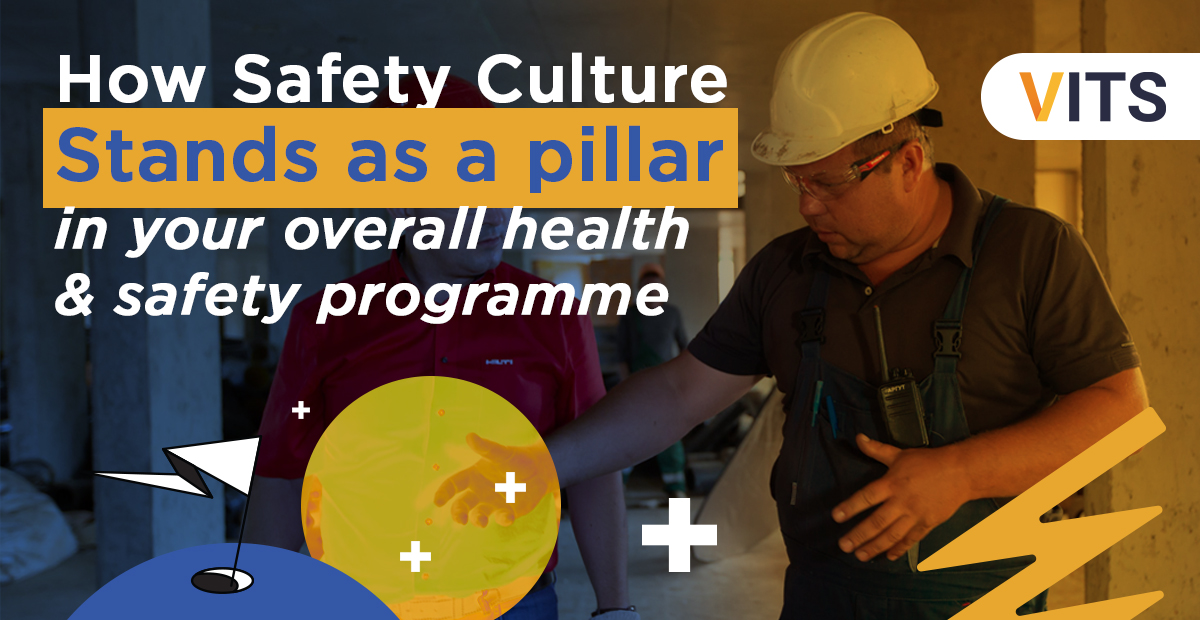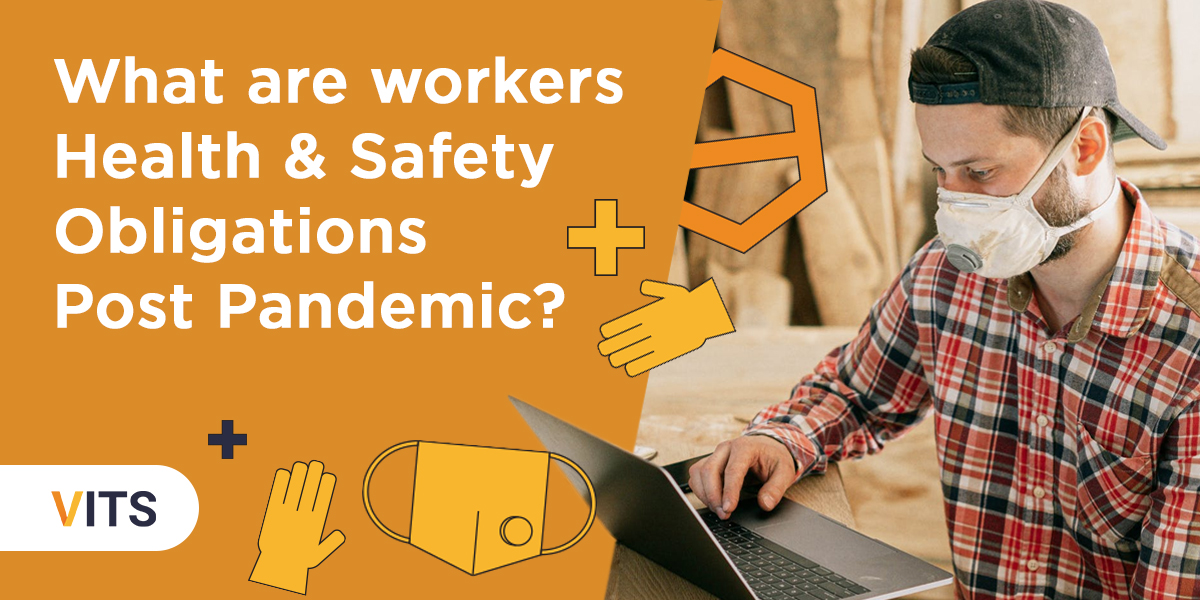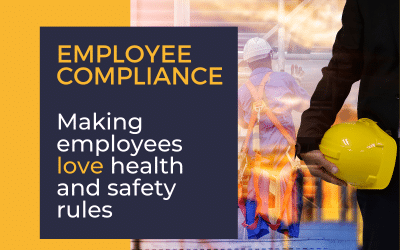How Safety Culture Stands as a Pillar In Your Overall Health And Safety Program
Safety culture is one pillar of a good health and safety program. With the many initiatives, programs and processes organizations must maintain and continually improve, it is important to ensure you have everyone on board and engaged.
Health and safety policies are powerful tools that help to keep an organization safe, but people are the most important aspect of keeping workers healthy and accident-free. Positive safety culture -- which comes from clear standards, goals, and training -- is a pillar in any health and safety program. This article explores why it's so important to your workers' well-being.
What Does Health and Safety Program Mean?
A health and safety program is the implementation of a plan created by an employer to encourage the maintenance of a safe workplace. It specifies who is responsible for what duties, how things are to be done when they are to be completed, how performance will be measured, and who has the authority to make changes to the plan.
Health and Safety Program-Explained by VITS
A comprehensive health and safety program provides a framework for assessing risks to injury, illness, or health effects. It includes the gathering of information on the current state of employee health and safety knowledge, attitudes, practices, and behavior. Updates are then made to the plan or policy with hazard prevention methods that are effective at reducing injuries.
Here are just a few of the ways that preventive action can reduce exposures to potential hazards: engineering controls, practical administrative controls, personal protective equipment (PPE), hygiene practices, supply of necessary training materials, education on the importance of proper use of PPE, routine compliance monitoring by supervisors of workers'
4 Elements of a Successful Health and Safety Program
You want to ensure your employees are being safe and productive while performing their duties- it is a part of doing business, of being a good employer. Set an example to your fellow employers by implementing a successful safety program for your staff.
To help you out, here are four key elements of successful health and safety program:
-
Management Support and Engagement
Effective safety programs are built on the foundation of management support. It’s important to remember that the entry and associate-level workers are less likely to take your program seriously unless you, as management, are participating. By demonstrating the value of the program by your presence, you demonstrate to employees that you care about their involvement and compliance with safety rules.
Another important step to ensure your safety program succeeds is for management to take action. You can’t just ask managers and supervisors to set a good example and encourage participation; you must ensure their active participation as well. For example. Managers should make sure floor workers understand hazards and enforce company policies. Managers should also enforce discipline when necessary and oversee the safety program’s implementation. -
Regular Reviews and Audits
Reviews are designed to help the safety department maintain the effectiveness of its overall plan. Like any other task, these habits can become routine over time if not constantly challenged by something new. So keep your safety program fresh by scheduling frequent workplace reviews or safety audits. It’s one way to make sure that employees remain on their toes when it comes to safety in the workplace, which can prevent accidents and still deter accidents from happening in the future. -
Proactive Safety Measures
Always be proactive, especially when it comes to workplace hazards like fires and electrical shock. By providing employees with the proper training and safety equipment and by making sure they fix any potential issues, you can help prevent emergencies from happening.
Proactive upkeep is a key part of a comprehensive workplace safety program. make sure your employees know how to do all the preventative maintenance jobs you’ve added to the schedule. Fix any potentially hazardous problems right away, whether they’re equipment malfunctions or unsafe conditions that could lead to accidents. Give employees the safety equipment they need to get the job done—and then check that they know how to use it properly. What's more, be sure you’re always stocked up with replacement parts, safety manuals, and tools like handles, grates, and guard rails. This helps your team to deal with risky situations before they mature into serious hazards. -
Training
Safety should permeate all levels of your organization. No matter who you are, if you’re present on the worksite, you should be fully trained in health and safety practices. Providing training shows that your company values employee safety and well-being, which will help keep injuries to a minimum.
The VITS platform gives you access to all of the tools you need to deliver excellent safety information, whatever your situation. Creating well-trained workers is only possible with well-rounded training, both before and after work begins.
What do all four of these have in common? They all contribute towards creating a robust safety culture.
What is Safety Culture?
Safety culture is the shared beliefs and attitudes of your organization regarding health and safety, as well as how those practices are communicated to your employees. It’s this culture that creates the ultimate factor fighting in your corner for health and safety compliance, as opposed to piecemeal compliance projects that merely check a box or complete a fix.
Safety Culture is about taking people who feel like "safety" is something that happens to them and influencing a change in their perspective through the power of a safety mindset. It is an attitude, a culture, a state of mind that permeates every employee.
Safety Culture: How to Engage Your Workforce
Safety and HR experts believe that employee engagement is critical to high-level safety performance. The more engaged employees are, the more committed they will be to the health and safety of themselves and others.
Engage your workforce through a real safety culture. When people feel part of a team, they are more likely to have an emotional investment in helping you reach your aims, and will therefore want to be part of the brand that is their employer.
Using Organizational Engagement
Organizational engagement is derived from the sense of purpose employees experience when they understand how their work contributes to the achievement of the organization's goals. It also comes from their commitment to, and belief in, the values and goals of their organization.
The aim of engagement is to connect with your staff to open up an honest two-way conversation. They are not just your safety representatives or your inspector’s target list. They are the people who will keep the business safe, which makes them the people who keep you safe. Having a strong safety culture encourages employees to engage in safety in the workforce. It brings them out of the target zone and into an active role of working in a way that benefits safety for everyone involved, from frontline workers to middle managers and even investors. If you want your people motivated by work itself rather than driven purely by financial reward, then emotional engagement matters.
Establishing a Safety Culture
When planning for your workplace culture, organizational and individual elements must come together in a way that works for all. Dynamic safety is an alternative philosophy focused on creating and sustaining a culture of safety and preventing injuries and incidents through the involvement of the entire organization.
The culture you create at your company will determine the kind of atmosphere that attracts and retains employees who value safety as a priority. A strong culture of safety provides a workplace environment where everyone feels free to speak up about hazards, suggestions, and ideas that will improve safety and work performance. A robust safety culture not only improves the way employees perform their jobs, but it also provides a structured framework for leadership to understand what is working, and where improvements can be made.
Developing a strong safety culture demands that management, supervisors, and employees all take responsibility for safety. It is critical to improving overall workplace attitudes regarding safety. This begins with the recognition that culture is not fixed—it evolves through the interaction and engagement of people.
Use These Tips to Help Bolster Employee Engagement for a Strong Safety Culture:
-
Value Focused
How do you create a strong safety culture? It all starts with leadership and you can't lead unless your team is engaged. And you can't engage them if they don't understand the "why" of safety. Cultural safety needs to be more than just rules and regulations. It needs to embody the values the organization believes in the most which typically includes: honesty, integrity and respect for all people.
-
Set Goals
Setting health and safety goals is an important component of a comprehensive management system, as it provides a framework for communication, decision making and accountability. No matter the size of your facility, everyone in your organization should be involved in setting company safety goals. Doing so not only helps you identify where improvements can be made but also encourages each person to take ownership of his or her safety. Create a safety strategy that is right for your industry, business type, and resources available. Then, prioritize areas that are most important to you and get everyone involved in this step-by-step plan. Each goal will serve as the guiding light for your efforts to achieve success across the board.
Establish goals for both short-term and long-term safety improvements on the job, then break them down into measurable portions. Use cascading goals to involve employees, the first level of responsibility for safety, who can ultimately maintain/improve upon job performance. Remember, it’s important to recognize positive efforts with incentive programs or other rewards.
-
Implement Systems to Achieve these Goals
It's never been more important to demonstrate a commitment to employee health and safety than it is today. Industry data show that on-the-job injuries cost U.S. employers $180 billion each year.
Let’s face it: most employees don't want to get hurt—but they don't always know how to stay safe—especially with pressure on them to perform and meet deadlines. Employers that host regular safety meetings and provide regular training and information on hazards and how to stay safe can help instill a culture of health and safety in their workplace.
As an employer, you can make safety more than just a slogan. You can demonstrate a commitment to your employees' health and safety in the workplace by implementing and enforcing safe work practices. Training employees on these safe work practices will help them do their jobs in ways that protect them from workplace hazards and illnesses.
-
Hold Management Accountable and Promote Visibility
Management needs to be visible in regards to safety for management to gain trust and credibility with employees, customers, and the community. With management visibly involved as leaders for safety and health, the organization creates a culture of safety and health that permeates throughout the entire organization. This can be achieved through management visibly committing energy and resources to the safety and health of the workforce
-
Responsibilities and Training for All Levels
All employees need to be involved in workplace safety. This includes your managers, site maintenance, your forklift drivers, and all members of staff. From watching out for one another to making sure that all machinery is properly maintained, every employee should have a vital role to play in keeping everyone safe.
-
Encourage Hazard Reporting
Ensure that the organization has a system for reporting near-miss accidents, injuries and the need for first aid. This will motivate employees to report such incidents, which can then be investigated by a designated person or persons. The system would ensure zero tolerance for unsafe behavior, and eliminate the potential of injuries being hidden from management.
-
Respond to Employees and Develop Reliable Systems
Creating a program to systematically address employee concerns is important for any organization. This is particularly true concerning safety, where employees feel they are under pressure to control accidents or hazards on their own, without assistance or support from upper management. A systematic program will help upper management remain current on problems faced by individual departments and identify opportunities for improvement.
Changing the Safety Culture in Your Organization
A proactive safety culture will not come to you overnight. It cannot be grown from a seed in a single year. It requires an ongoing, consistent effort to demonstrate the attitudes, behaviors, and norms that foster a positive safety culture.
Commitment to a safe workplace combined with open and transparent communication methods between management, supervisors and employees will contribute to the development of a positive safety culture. Discussion, debate and cooperation are essential in maintaining a dynamic culture that can be utilized to solve safety issues. A safety culture requires the top level of the management team to participate at all times throughout the safety "soul searching" process.
Engaging Co-Workers in Health and Safety
The role of everyone in the organization is to be an ambassador for safety. They do this by ensuring they and their team members are compliant with all the rules and regulations and supporting effective communication to ensure that everyone is aware of what is happening around them and who they can turn to for help. A good health and safety culture depends on employees being actively engaged in workplace health and safety programs. Worker health and safety depends on more than just implementing occupational health and safety rules and stipulations. It relies heavily on creating a health and safety culture in the workplace that supports a safer, healthier environment for all employees.
Implementing Positive Safety Culture in the Workplace
Whether on or off the job, on a construction site or in the office, workplace safety is crucial and should always be on your mind. In many cases, having a positive safety culture can result in employees being more attentive and less likely to cause injuries. Use this list as a quick reference guide to implementing positive safety culture at work:
Tips for Implementing a Safety Program
Show As Well As Tell
Management, as well as top-level execs, need to lead by example. If you have been given the responsibility of being a leader, this is an ideal opportunity for you to set a good example for the other workers. Safety is a key concern and it has to be adhered to by all, especially bosses. A good manager will ensure that all safety precautions are strictly enforced by themselves and their employees.
Focus on Effective Communication
By implementing regular meetings and toolbox talks, employees will be able to understand their roles and responsibilities in the company. This will encourage them to keep abreast of the health and safety procedures and hence be more efficient in performing their tasks.
Review Existing Strategies and Policies
At least once or twice a year, review your safety plans with your entire staff to ensure that the strategies you’re using are always current. If one of your strategies isn’t working, replace it with one that will be more effective.
Reinforce and Reward
Reinforce safety measures in the workplace and motivate employees in the process by offering incentives for safety milestones (for example, x days without an incident).
Provide Proper Professional Training
Use VITS to provide the safety management with an efficient system that engages employees in top tier health and safety training. VITS is an online safety management solution, helping safety professionals send interactive safety training, measure employee engagement and keep track of training results.







